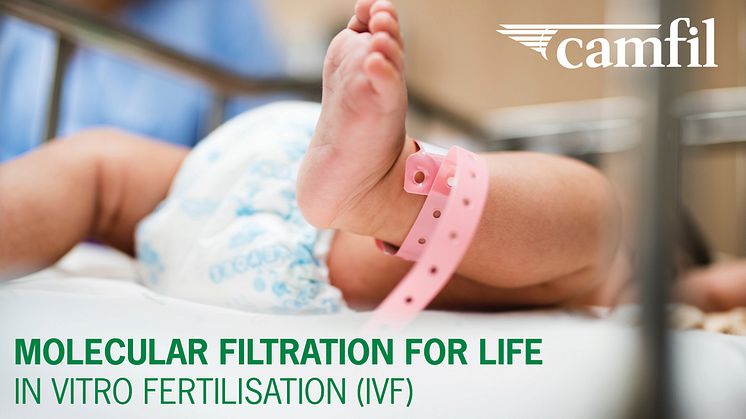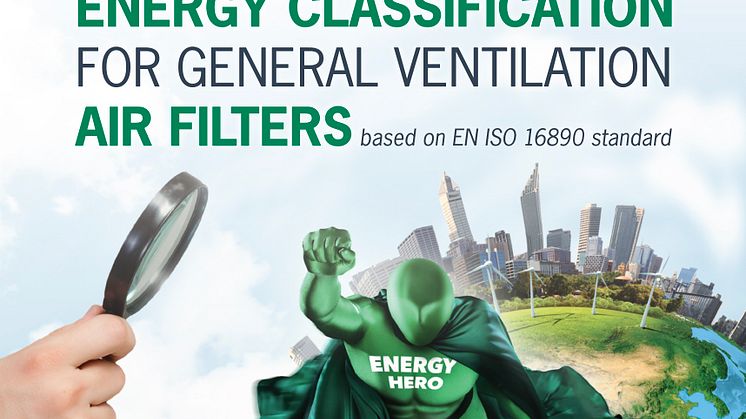
Blog post -
Molecular Filtration for Life – In Vitro Fertilisation (IVF)
Starting the In Vitro Fertilisation (IVF)process can be an exciting and nerve-wracking experience for anyone needing help in conceiving a child.
In the industrialised countries alone, an estimated 15 percent of people have problems conceiving. Scientists cite stress, environmental pollution, diet, sexually transmitted diseases and obesity as the reasons and predict that the situation will worsen in the coming years.
As a technique, IVF has flourished ever since the birth of the first “test tube” baby in 1978. Simply described, IVF is the process of fertilisation by manually combining an egg and sperm in a laboratory dish. When the IVF procedure is successful, the process is combined with a procedure known as embryo transfer, which is used to physically place the embryo in the uterus.
Providing the appropriate environment for fertilisation is one of the most important steps in IVF. Airborne pollutants are critical in IVF facilities where air quality in laboratories and clinical procedure rooms can have enormous effects on embryo quality, embryo survival and the clinical outcome of IVF treatment. This is where Camfil’s Molecular Contamination Control division is bringing effective filtration solutions to the industry.
Many IVF clinics in developed countries have grown into profitable enterprises and the “success rate” of their IVF procedure and reputation are key factors that couples take into account when selecting a clinic.
Eliminating harmful molecular pollutants
Good air quality may be directly related to the success rate of the IVF procedure. Several gases or groups of gases have been identified as problematic, including volatile organic compounds (VOCs), aldehydes, formaldehydes, nitrogen oxide and styrene.
Molecules that are toxic towards human cells are referred to as cytotoxic and cytotoxins can disrupt the external cell membrane or prevent cells from growing and dividing.
After fertilisation, the single-cell human egg splits from two to four to eight cells. The cell division process continues as cells become specialised in form and function. It is during this initial period outside the female body, when the cell count is lowest, that exposure to molecular pollutants (cytotoxins) represents the greatest risk. This requires incorporating precautions in the IVF procedure to limit exposure. Applying molecular filtration to the clinic air provides an essential protection for the embryo prior to implantation.
Molecular filtration in building ventilation
To deal with varying sources of gases, molecular filters can be applied in different locations within the building ventilation system to filter fresh air and treat high concentrations of pollutants from external sources, and to filter recirculation or return air and treat residual trace concentrations of pollutants from internal and external sources. To realise the optimum performance from any molecular filter, it is essential to use pre-filters to provide protection from particulate matter. The recommended level is min. ePM1 50 percent (ISO 16890) or MERV 13 (ASHRAE 52.2).
Broad spectrum and targeted adsorption
The composition of the chemical cocktail in the air is extremely complex and variable. Molecular filtration is therefore based on the use of a broad-spectrum adsorbent that will remove >99 percent of all the different molecules in the air.
However, broad spectrum adsorbents will not control up to 50 relatively common gases, which requires the use of a special chemically impregnated adsorbent to target individual molecules or groups of molecules. A layered configuration, subject to available space and pressure loss restrictions, will give superior performance and lower life cycle, compared to a blended media solution.
Recommended products
Some experts in IVF clinics are understandably aware of issues related to “outgassing” of molecular contaminants from materials used to construct such facilities. Increasingly they are setting the bar for control of molecular pollutants at higher levels. In a natural progression, some customers are now seeking assurances that filters are equally as clean, in terms of molecular out-gassing, as other items in the clinic. This is a similar trend to the microelectronics industry where such demands have been routine for several years. In such situations, Camfil can offer GigaPleat filters which are assembled using only materials which have been tested to assure low outgassing characteristics. Furthermore, if so required, each completed GigaPleat filters as an entire device can also be tested for outgassing prior to the filter leaving the factory. CamCarb, CityCarb, and CitySorb have unique attributes, from high capacity to combined removal of particles & molecules, and can meet every need for filtering fresh/make-up air and recirculation air at IVF clinics.
Support services for IVF clinics
As specialists, Camfil can offer a comprehensive range of support services to clinics to achieve the maximum benefit of molecular filtration. These services include passive sampling devices to determine gas concentrations in ventilation systems and enclosed spaces, Gigacheck, and Gigamonitor techniques to analyse samples of used molecular filtration media, monitor residual life and plan filter replacements.
Camfil has a unique molecular filtration test facility to test full-scale products and mimic actual application conditions. Proprietary software is also used to determine molecular filtration lifetime and assist customers in selecting the most appropriate and efficient solution for their application. We test to the standard ISO 10121-1:2014: test method for assessing the performance of gas-phase air cleaning media and devices for general ventilation.



